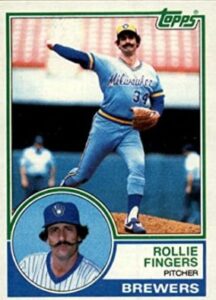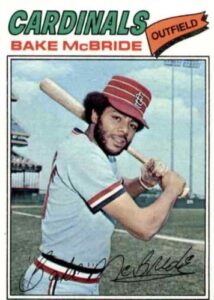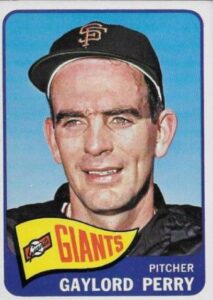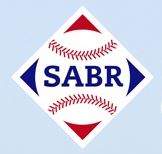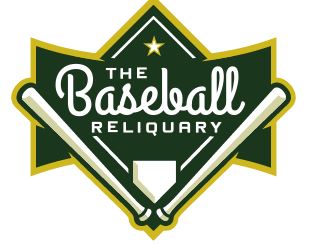Recognizing how so many of us are LONG-ing for baseball, Baseball Roundtable would like to use this post to look at the players and plays from some of the longest games in MLB history – those times when fans got way more than their money’s worth at the ballpark.
There have been only eight MLB games of 23 innings or more and only five of those did not end in a tie. The Mets were in three of the five and lost all three (one each of 25, 24 and 23 innings). Note: There have been nine MLB games of 22 innings and 46 games of 20 or more innings.
Now, let’s take a look at a few of the longest MLB games ever.
LONGEST GAME BY INNINGS – May 1, 1920 … Brooklyn Robins (Dodgers) versus Boston Braves
On May 1, 1920, the Brooklyn Robins (Dodgers) and Boston Braves locked up in the longest MLB duel ever – by innings – playing to a 1-1 tie over 26 frames (game called due to darkness). This one gets a special nod, since it is also the longest game in which a starting pitcher was on the mound for the entire game (in this case, both starters). My, how the game has changed!
Starting pitchers Leon Cadore of Brooklyn and Joe Oeschger of Boston each threw more than 300 pitches (analysts estimate Cadore at 345 and Oeschger at 319) in completing their 26-inning, record-setting starts. Cadore gave up 15 hits and five walks, while fanning seven. Oeschger allowed only nine hits and four walks, while also striking out seven batters. The Robins scored their lone tally in the fifth – a leadoff walk to number-eight hitter (catcher) Ernie Kreuger, who moved to second on a ground out by Cadore and then scored on a single by 2B Ivy Olson. The Braves countered with a run in the sixth – on a one-out triple by cleanup hitter Walton Cruise (RF) and a two-out single by 3B Tony Boeckel. That two-inning scoring spree was followed by 20 innings of scoreless ball. Oh, and here’s another sign of how the game has changed, the time of the 26-inning contest was only 3 hours and 50 minutes.
It was a particularly bad day for Braves’ number-two hitter 2B Charlie Pick, who came to the plate 11 times and was responsible for 13 outs – zero-for-eleven, hitting into two double plays. Pick came into the game hitting .324 (12-for-37) and left hitting .250. Pick was a career .261 hitter over six MLB seasons (367 games).
A Tale of Two Cities
Playing for the Brooklyn Robins in Boston (Braves) on May 1, 1920, Charlie Pick is recorded an MLB-record 11 at bats in a game (to date, 17 players share that record) – and went zero-for-eleven. Pick is the only player to record a hitless 11-at bat day. By contrast, on July 10, 1932 – in Cleveland – as the Philadelphia Athletics topped the Indians 18-17 in 18 innings, Cleveland 2B Johnny Burnett went 9-for-11 (two doubles and seven singles). Burnett’s nine safeties in one game remains the MLB record.
Cadore and Oeschger, by the way, were both off to solid starts in 1920. Cadore came into the historic game at 2-1, 1.38 (with two complete games in three starts), while Oeschger was even better at 2-1, 0.63 (with three complete games in three starts). At the end of the contest, Cadore’s ERA was 0.87, while Oeschger stood at 0.49. Cadore finished the season at 15-14, 2.61, with 16 complete games in 30 starts. Oeschger went 15-13, 3.46, with 20 complete games in 30 starts. (That season MLB pitchers put up a 3.46 ERA and completed 57 percent of all starts.) Both Cadore and Oeschger finished under .500 for their careers (Cadore 68-72, 3.14 and Oeschger 82-1666, 3.81.)
_______________________________________________
LONGEST GAME (by time)* – May 8, 1984 … Milwaukee Brewers versus Chicago White Sox
This one gets an asterisk – because it was not a “continuous” contest.
MLB’s longest-ever (time-wise) game started on May 8, 1984 and was played at (old) Comiskey, with the hometown White Sox prevailing 7-6 in 25 innings (tied for the second-most MLB innings) – in a record-long eight hours and six minutes of game time. The game started at 7:30 p.m. and was suspended after 17 innings (at 1:05 a.m.) due to the American League curfew rule then in force. Play was resume the following day.
There were plenty of chances for this one to end earlier. The game was tied 1-1 going into the top of the ninth, when the Brewers scored twice off White Sox’ reliever Britt Burns to take the lead. (Brewers’ SS Robin Yount led off with a double, stole third after DH Cecil Cooper grounded out and came in to score the go-ahead run on a bad throw by White Sox ‘ C Jim Sundberg. Then, Brewers’ 1B Ted Simmons singled, went to second on a wild pitch and scored on a (LF) Ben Oglivie single. With a 2-0 lead, the Brewers brought in future Hall of Fame closer Rollie Fingers and the die seemed cast. Oops! The bottom of the ninth saw the White Sox tie the game with two tallies of their own. Left fielder Tom Paciorek led off and reached on a two-base error by Brewers’ RF Charlie Moore. (You’ll find that errors played a role in a number of these super-long games.) Fingers got the next two batters and things were looking pretty good for the Brew Crew. However, 2B Julio Cruz scored Paciorek with a double to left and CF Rudy Law brought Cruz home with a single. Carlton Fisk grounded out to end the frame and it was time for some “free baseball” – lots of it.
In 1981, Rollie Fingers, with the Brewers, won the American League Most Valuable Player and Cy Young Awards. He is one on only ten pitchers and just three relievers to earn both those honors in the same season.
No one scored between the ninth and the seventeenth innings (when the game was suspended). The goose eggs continued when play resumed, going on until the until the top of the 21st, when the Brewers put up a three-spot on a three-run homer off Ron Reed by Ben Oglivie (scoring Cecil Cooper and 1B Ted Simmons) – and the game again appeared to be over. The White Sox, however, scored three of their own in the bottom of the inning. Just like the ChiSox’ rally in the bottom of the ninth, it all started with a fielding error. This time Rudy Law reached on an error by Milwaukee third baseman Randy Ready. Chuck Porter then gave up, in order: a run-scoring single to Carlton Fisk; a single to 1B Marc Hill; a bases-loading walk to Harold Baines (after fanning Dave Stegman); and a two-run single to Paciorek. Porter got the next two hitters, and the game continued its march toward the record books.
Finally, with one out in the bottom of the 25th White Sox’ RF Harold Baines hit a walk-off home run (making it, of course, the latest walk-off long ball ever) against Chuck Porter (starting his eighth inning of relief) to win it for the ChiSox. A few tidbits:
- White Sox’ CF Rudy Law, C Carlton Fisk and 2B Julio Cruz, as well as Milwaukee DH Cecil Cooper each had an MLB record-tying 11 at bats in the game. They had three, one and two hits, respectively.
- Rudy Law, Carlton Fisk and Harold Baines each had a record-tying 12 plate appearances. Law and Fisk each had one walk, Baines had two free passes.
- Chicago’s Dave Stegman, who came on as a pinch runner for DH Greg Luzinski in the eighth inning and stayed in to play LF, struck out a game-high five times in eight at bats.
- The teams used a combined 14 pitchers (six for the Brewers, eight for the White Sox).
- Two relievers went seven or more innings: losing pitcher Chuck Porter of the Brewers (7 1/3); Juan Agosto of the White Sox (7 innings) – both logged more innings than their team’s starting pitcher.
- The White used four first basemen: Greg Walker (started); Mike Squires replaced Walker in the top of the ninth; Marc Hill (pinch hit for Squires in the 14th and stayed in at 1B); in the 22nd inning, Tom Paciorek, who had replaced Ron Kittle in LF in the top of the fourth inning, moved to 1B, replacing Hill.
- Seven future Hall of Famers played in the game: for the White Sox – catcher Carlton Fisk and winning pitcher Tom Seaver; for the Brewers – starting pitcher Don Sutton, SS Robin Yount. 1B Ted Simmons (who made the Hall as a catcher), RF Harold Baines and closer Rollie Fingers (who blew the save in the ninth).
Tom Terrific for the Win(s)
The winning pitcher in the longest-ever MLB game (by time, not innings) was future Hall of Famer Tom Seaver, who pitched the 25th inning for the ChiSox (on May 9). It was Seaver’s only relief appearance of the season (one of just nine in his career) and his only career win in relief (he also had one save and two losses in that role).
Notably, Seaver then started the regularly scheduled May 9 contest and went 8 1/3 innings (three hits, one walk, four earned runs) to pick up a victory as a starter. (White Sox won 5-4).
Outside of Harold Baines’ walk-off home run, White Sox’ LF Tom Paciorek was (arguably) the hitting star of the game, going five-for-nine, with one run and three RBI (no one else had five safeties). LF Ben Oglivie went two-for-ten for the Brewers, but had a home run and four RBI.
____________________________________________________
Have You Ever Seen the Rain?
It a long, damp evening for Phillies’ fan on In July 2, 1993. That’s the day (as it would turn out “days”) the Phillies matched up in a twilight doubleheader that took an MLB record 12 hours and five minutes to complete – and resulted in a not-so-satisfying split. It all started at 4:35 p.m. July 2 and ended at 4:40 a.m. July 3 – when Phillies’ closer Mitch Williams lined a single to left off future Hall of Famer Trevor Hoffman to drive in Pete Incaviglia and give the Phillies a 6-5, ten-inning walk-off win. Williams got the latest (or perhaps earliest) pitching victory and walk-off hit in baseball history. It was, by the way, Williams’ only plate appearances of the 1993 season (in which he appeared in 65 games) and one of only three career hits for Williams (3-for-16 in 360 games over 11 MLB seasons).
Why did it take a record 12 hours and five minutes to complete the twin bill? The first game of the doubleheader was interrupted three times for rain delays totaling five hours and 54 minutes (there was 2:34 of game play). After a post-game break of 25 minutes, Game Two started at just before 1:30 a.m., went ten innings and, as noted, ended at 4:40 a.m. The crowd, originally 54,617, was down to about 1,000 hardy fans by the end of the doubleheader. For those that want to know such things, the Padres won the first game 5-2, with Mark Ettles getting the win, Gene Harris getting the save and Fred McGriff popping a two-run home run. Game Two went to the Phillies 6-5 in ten innings, with Williams getting the win (pitching hitless ball in the ninth and tenth), Hoffman the loss and Rickey Jordan launching a three-run homer in the fifth inning.
LONGEST CONTINUOUSLY PLAYED GAME (by innings) THAT PRODUCED A WINNER (lots of “qualifiers” in this one) – September 11, 1974 … St. Louis Cardinals versus New York Mets
The September 11, 1974 Cardinals/Mets tilt is tied for the second-most innings played in an MLB game at 25 frames. Unlike the Brewers/Mets 25-inning tilt, it was not suspended at any point and, unlike the Robins/ Braves 26-inning tie, this one did produce a winning team. Therefore, its stands as the longest (by innings) continuously played MLB game that produced a winner. The Mets estimated about 1,000 of the 13,450 fans in attendance at the start were still in the park when the game ended at 3:13 a.m.
In this contest, both squads scored in the first inning – the Cardinals’ on a single off Jerry Koosman by 1B Joe Torre (scoring Ted Sizemore) and the Mets on a double by 1B John Milner (off Bob Forsch), scoring LF Cleon Jones. The Mets plated two more runs in the bottom of the fifth as Jones touched Forsch for a two-run homer (after an inning-opening single by 2B Felix Millan). That lead held up until the top of the ninth, with Koosman cruising along with a three-hitter and a two-run lead.
In the ninth, Koosman gave up a single to C Ted Simmons (replaced by pinch runner Larry Herndon) sandwiched between strikeouts of Joe Torre and CF Bake McBride. Then, just one out away from victory, Koosman surrendered a game-tying home run to 3B Ken Reitz. To make a long story short, neither team scored over the next 15 innings. Then, in the top of inning number 25, Bake McBride made an unusual game-winning trip around the bases. McBride beat out an infield single to open the inning. Then with Ken Reitz at the plate at the plate, Mets’ pitcher Hank Webb made a wild pick-off throw to first that rolled into foul territory. By the time, 1B John Milner retrieved the ball, McBride had rounded third. Milner threw to catcher Ron Hodges and McBride slid safety across the plate as Hodges dropped the throw. Webb and Hodges were charged with errors on the play, although some observers later said they felt Milner should have handled Webb’s throw and that McBride would have scored even if Hodges had not dropped the ball.
A few tidbits:
- The teams used a combined 50 players – 13 pitchers.
- The Cardinals’ Claude Osteen pitched 9 1/3 innings in relief.
- Mets’ 1B John Milner and 2B Felix Milan each had an MLB record-tying 12 plate appearances.
- Mets’ OF Dave Schneck (who played RF and CF) had an MLB single-game record-tying 11 at bats.
- There were 12 pinch hitters and two pinch runners used.
- The winning pitcher was the Cardinals’ Sonny Siebert (2 1/3 innings of scoreless ball) and the losing hurler was Hank Webb (one run, one inning)– who appeared in only three games in 1974 and went 0-2, 7.20.
_______________________________________________________
THE LONGEST CONTINUOUSLY PLAYED NATIONAL LEAGUE GAME (by time) – May 31, 1964 … San Francisco Giants versus New York Mets
BBRT give special recognition (by time) to the longest MLB game ever in terms of continual play. The San Francisco Giants topped the New York Mets 8-6 in 23 innings on May 31, 1964 – and took seven hours and 23 minutes to do it. Not only that, it was the second game of a doubleheader. It is the longest National League game (by time), MLB’s second-longest game (by time) and the longest continually played (by time) game. Remember, that Brewers/White Sox 25-inning, eight hours-plus game was suspended after the 17th frame.
This one looked to be over early, as the Giants led 2-0 after just three batters had faced starter Bill Wakefield. LF Harvey Kuenn led off with a walk, RF Jesus Alou stroked a run-scoring double and CF Willie Mays hit a run-scoring single. San Francisco added four more runs on six singles in the top of the third to take a 6-1 lead. (Mets’ C Chris Cannizarro drove in CF Jim Hickman with a two-out single off Giants’ starter Bobby Bolin in the second). The Mets added two runs in the fifth off Bolin (on a one-out single by RF Joe Christopher, a run-scoring triple by 1B Ed Kranepool and a two-out run-scoring single by 3B Charley Smith). They tied it in the seventh (Bolin was still in the game) on a three-run homer by Christopher (scoring SS Roy McMillan and LF Frank Thomas). That ended the scoring until the top of the 23rd inning, when the Giants launched a two-out rally against Galen Cisco: SS Jim Davenport, triple; 3B Cap Peterson, intentional walk; PH Del Crandall, run scoring double; RF Jesus Alou run-scoring single. Bob Hendley took the mound for the Giants in the bottom of the inning and retired the Mets in order (two strikeouts and a fly ball) to save the game for Gaylord Perry, who had tossed ten scoreless frames in relief.
Some tidbits:
- Each team used six pitchers in the contest.
- There were ten pinch hitters and one pinch runner used.
- Tom Sturdivant and Larry Bearnarth of the Mets pitched in both games of the doubleheader – with Bearnarth throwing seven scoreless innings in the second game after giving up one run in two innings in Game One.
- Galen Cisco, who took the loss for the Mets, pitched nine innings in relief (giving up two runs on five hits).
- Gaylord Perry got the win for the Giants, tossing ten scoreless innings in relief (seven hits, one walk, nine strikeouts). That season Perry started 19 games and relieved in 25.
- Gil Garrido, Jim Davenport and Willie Mays all spent some time at SS for the Giants during the game.
- The list of pinch hitters used by the Giants was pretty impressive: Duke Snider; Willie McCovey; Matty Alou; Del Crandall; Cap Peterson. Mets’ pinch hitters were not as well known: Jesse Gonder; George Altman; Dick Smith; Hawk Taylor; John Stephenson.
- Five future Hall of Famers played in the game for the Giants – Gaylord Perry, Willie Mays, Orlando Cepeda, Willie McCovey and Duke Snider.
The first game went just nine innings and two hours and 29 minutes. It does mean fans got nine hours and 52 minutes of baseball (not including the break between games) for the price of one ticket – which, by the way, is the longest MLB double header ever in terms of game time.
Oh, So Close … and Yet So Far
Bob Hendley, who picked up the save in the Giants May 31, 1964, 23-inning win over the Mets, was involved in another historic MLB game. On September 9, 1965, he took part in the MLB game that featured the fewest combined base hits ever. Hendley, with the Cubs at the time, started against the Dodgers and Sandy Koufax. Koufax went into the game with a 21-7, 2.20 record on the season; while Hendley was 2-2, with an 8.22 earned run average.
Hendley, however, was on top his game that day. After eight innings, he had given up just one hit and one walk (versus three strikeouts). The only hit had been a harmless double by Dodgers’ LF Lou Johnson in the bottom of the seventh. Hendley had allowed just one run (unearned) in eight frames – and even that wasn’t his fault. The pesky Johnson had led off the fifth with a walk; moved to second on a sacrifice by RF Ron Fairly; stole third; and then scored as Cubs’ catcher Chris Krug made a wild throw past third baseman Ron Santo.
Unfortunately, it wasn’t nearly enough. Koufax, threw a perfect game – striking out 14 Cubs. It was the last of Koufax’ four career no-hitters (one each in 1962-63-64-65) and his only perfect game. For Hendley, it was a well-pitched loss and a piece of the record for playing/pitching in the MLB game with the fewest combined hits – ONE.
Hendley, by the way, went 48-52, 3.97 in a seven-year MLB career (Braves, Giants, Cubs, Mets), while Koufax went to the Hall of Fame with a 165-87, 2.76 record, three Cy Young Awards and one MVP Award.
____________________________________________________________
THE LONGEST SHUTOUT – April 15, 1968 … Houston Astros versus New York Mets
Of course, 1968 is known as The Year of the Pitcher and there were signs that this was to be the case as early as April 15. That’s when the Houston Astros topped the Mets (in Houston) 1-0 in the longest shutout in MLB ever. The two teams traded goose eggs for 23 innings until – in the bottom of the 24th frame – Houston broke the scoring ice. Like so many of these long games, an error played a role in the outcome. In the bottom of the 24th, Astros ‘ RF Norm Miller opened with a single to right off Les Rohr; Rohr then balked Miller to second; LF Jimmy Wynn was given an intentional pass; 1B Rusty Staub grounded to the right side, with the runners moving up to second and third; PH John Bateman (hitting for Hal King, who had caught all 24 innings) drew an intentional walk (to load the bases) ; and, finally, 3B Bob Aspromonte reached on an error by SS Al Weiss, allowing the winning run to score.
Some tidbits:
- Over 24 innings, each team collected 11 hits in 79 at bats, each team had only one extra base hit (both doubles).
- The starting pitchers set the tone. Mets’ starter Tom Seaver threw ten, two-hit shutout innings, while Astros’ starter Don Wilson tossed zeroes for nine frames (five hits).
- The Mets used eight pitchers, the Astros five.
- Wade Blasingame got the win with four innings of one-hit relief; Les Rohr took the loss, giving up one run in 2 1/3 innings.
- There were six intentional walks in the game.
- Jim Ray pitched seven innings of relief for the Astros, giving up just two hits and a walk, while fanning 11.
- Eight pinch hitters and one pinch runner were used in the contest.
- Both catchers (Hal King or the Astros and Jerry Grote of the Mets went the distance behind the plate.)
A CHANGE OF PACE – SHORTEST (NINE INNING) GAME EVER –
On September 28, 1919, the Phillies took on the Giants in New York, with Philadelphia’s Lee Meadows (12 wins and 19 losses) taking on New York’s Jesse Barnes (24-9). The outcome was as expected, Giants 6 – Phillies 1. The game featured a total of 18 hits and three walks. None of this is surprising. What is surprising, however, is that it took just 51 minutes to play the entire nine innings. Now, THAT is pace of game.
Primary Resources: Baseball-almanac.com; baseball-reference.com; MLB.com; “Let’s Play Two – Until 4:40 in the Morning,” Los Angeles Times, July 4, 1993 (from the wire services); “September 11, 1974: Cardinals Prevail over Mets in 25 innings at Shea Stadium,” by Ken Duffy and Rory Costello, Society for American Baseball Research.
BASEBALL ROUNDTABLE ON THE TOP 100 BASEBALL BLOG LIST
 Baseball Roundtable is on the Feedspot list of the Top 100 Baseball Blogs. To see the full list, click here.
Baseball Roundtable is on the Feedspot list of the Top 100 Baseball Blogs. To see the full list, click here.
I tweet baseball @DavidBBRT
Follow/Like Baseball Roundtable’s Facebook Page here. More baseball commentary; blog post notifications; PRIZES.
Member: Society for American Baseball Research (SABR); The Baseball Reliquary; The Negro Leagues Baseball Museum.


